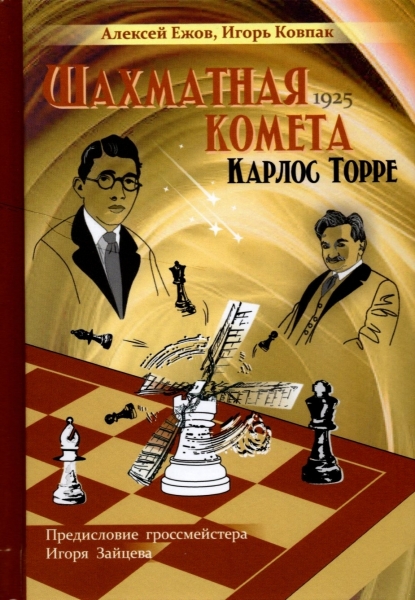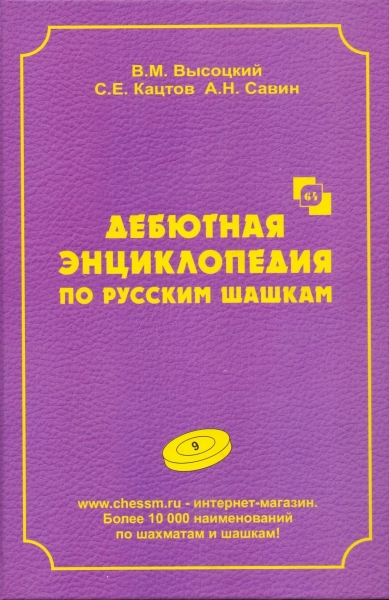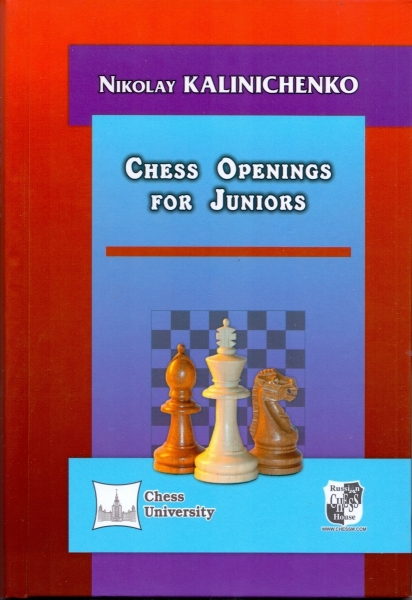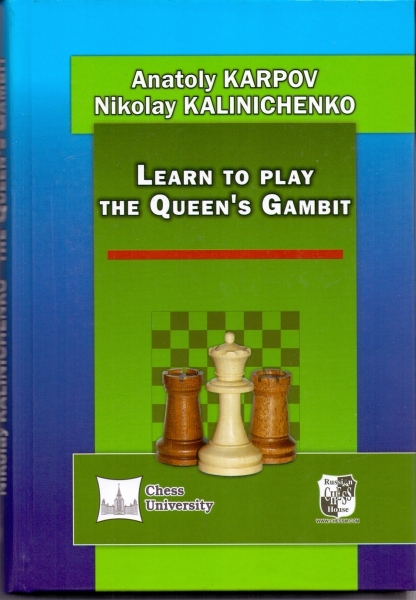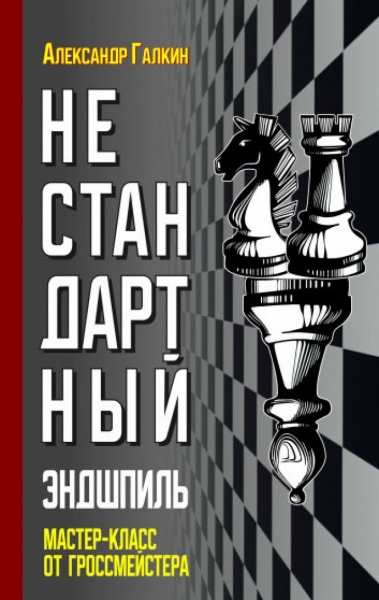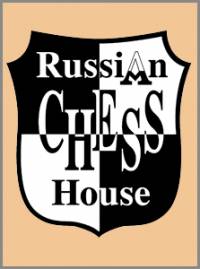PERIODICALS
-
2.08 $
Supplement to the newspaper "World of Chess" .Parties of the most important tournaments without notes. The release of the applications ended at No. 22.
-
2.08 $
Supplement to the newspaper "World of Chess" .Parties of the most important tournaments without notes. The release of the applications ended at No. 22.
-
2.08 $
Supplement to the newspaper "World of Chess" .Parties of the most important tournaments without notes. The release of the applications ended at No. 22.
-
-
-
15.20 $
an annual set of all 52 numbers of the weekly chess bulletin TASS. In the same year there were applications of 6 issues.
-
20.04 $
Quarterly magazine. Published in Prague in the 50-60's. Contains articles in different languages, including Russian. In the presence there are kits of different years. For their purchase, make a request by e-mail or by phone.
-
47.68 $
NIC Forum Readers from all over the world join in discussions of previous surveys. Both (grand) masters and club players shed their light on new discovery and search together for the truth. Sosonko & Corner The game Smeets-Pavasovic from the Grandmaster C Group of the 2004 CORUS Chess Tournament brought Sosonko back to his childhood days in Leningrad. The teachers at the Pioneer Palace would have never been approved of the moves these young grandmasters were playing: g2-g4 for White and especially Bf8-d6, putting the bishop in front of the queen & s pawn. Sosonko calls it Fidel & amp; Attack. Read why! Book Review The publication of the third edition of John Watson & s classic "Play the French" and a trilogy on the same opening by Lev Psakhis, whose books are always worth a detour, are an excellent starting point for . And Sakaev & s Queen & amp; Gambit Accepted monograph is the ideal finale. According to Flear it is an ideal practical book for those who want to learn about this opening. Quality comes at a price! 33 NIC Surveys Yearbook 70 Sicilian: Najdorf Variation 6.Bg5, by Van der Tak Sicilian: Najdorf Variation 6.Bg5, by Karolyi Sicilian: Najdorf Variation 6.Bc4, by Golubev Sicilian: Velimirovic Attack 8.Qe2, by Bosch Sicilian: Alapin Variation 2.c3 e6, by Tzermiadianos Pirc: Austrian Attack 4.f4, by Van der Weide King's Fianchetto: 3.Nf3, by Fogarasi French: Steinitz Variation 4.e5, by Fogarasi French: MacCutcheon Variation 4 ... Bb4, by Glek French: Winawer Variation 7.Qg4 0-0, by Almasi Caro-Kann: Advance Variation 4.Be3, by Bosch Scandinavian: Gubnitsky-Pytel Variation 3 ... Qd6, by Karolyi Ruy Lopez: Neo-Steinitz Variation 5 ... Bg4, by Van der Tak Ruy Lopez: Neo-Arkhangelsk Variation 6 ... Bc5, by Inarkiev Ruy Lopez: Anti-Marshall Variation 8.h3, by Lukacs / Hazai Italian: Evans Gambit 4.b4, by De Zeeuw Scotch: Steinitz Variation 4 .... Qh4, by Pliester Two Knights: Traxler Gambit 5.Nf7, by Pastore / Montcaubeig / Da Costa jr English Defense: 1 ... e6 and 2 ... b6, by Van der Stricht Budapest Gambit: Fajarowicz Gambit 3 ... Ne4, by Gutman Queen's Gambit Declined: Blackburne Variation 5.Bf4, by Ilic Slav: Exchange Variation 6 ... a6, by Langeweg Slav: Botvinnik Variation 12 ... Qc7, by Shabalov Queen's Gambit Accepted: Two Knights Variation 4 ... c5, by Karolyi Catalan: Open Variation 6 ... dc4, by Vladimirov Nimzo-Indian: Rubinstein Variation 8 ... Ba5, by Lukacs / Hazai Nimzo-Indian: Classical Variation 4.Qc2, by Stohl Queen's Indian: Nimzowitsch Variation 5.Qa4, by Timoshenko King's Indian: Fianchetto Variation 8.Qd3, by Lukacs / Hazai Dutch: Leningrad Variation 7 ... Nc6, by Jensen English: Symmetrical Variation 4.e4, by Vilela English: Anti-Grönfeld Variation 4.Qa4, by Fogarasi Rйti: A White Benoni 8 ... d4, by Panczyk / Ilczuk
-
47.68 $
NIC Forum Readers from all over the world join in discussions of previous surveys. Both (grand) masters and club players shed their light on new discovery and search together for the truth. With contributions by John Watson, Jacob Aagaard, and many others. Sosonko & Corner Yasser Seirawan believes 1.e4 is "obviously the most aggressive move", but Evgeny Sveshnikov takes it a step further. He is a man of strong opinions and labels 1.e4 as "the strongest young sisters" Garry Kasparov classified all openings after 1.e4 and explains why Sveshnikov stopped playing the Sveshnikov Variation In reply to a fashionable way to circumvent his latest love (4 ... e5!) Sveshnikov has developed a new gambit. Book Review The word "repertoire" is used universally, but not always explained. So for that matter is the term "World Champion", but that & amp; s another story. In his column Glenn Flear reviews Khalifman & s two books on the repertoire of Vishy Anand (1.e4) and gives it "thumbs up". He asked a man to have a look at them and give his opinion. His reaction: "I don & amp; t buy chess books any more, but I & ll make an exception for these two! Plus Konstantin Sakaev & s book on How to Get the Edge Against the Gruenfeld. 33 NIC Surveys Yearbook 71 Sicilian Defense: Najdorf Variation 6.Bg5, by Van der Tak Sicilian Defense: Najdorf Variation 6.Be3 e5, by Lukacs / Hazai Sicilian Defense: Dragon Variation 9.Bc4, by Golubev / Aagaard Sicilian Defense: Dragon Variation 9.Bc4, by Anka Sicilian Defense: Sveshnikov Variation 10 ... f5, by Nikitin Sicilian Defense: Taimanov Variation 6.Be3, 7.Qd2, by Fogarasi Sicilian Defense: Paulsen Variation 5.Nc3 b5 6.Bd3, by Van der Wiel Pirc Defense: Austrian Attack 4.f4, by Tzermiadianos French Defense: Exchange Variation 4.Nf3 Bd6, by Boersma French Defense: MacCutcheon Variation 4 ... Bb4, by Glek French Defense: MacCutcheon Variation 4 ... Bb4, by Cebalo French Defense: Winawer Variation 7.Qg4 0-0, by I.Almasi Caro-Kann Defense: Classical Variation 4 ... Bf5, by Lukacs / Hazai Caro-Kann Defense: Classical Variation 4 ... Bf5, by Greenfeld Petroff Defense: Jaenisch Variation 6 ... Be7, by Karolyi Ruy Lopez: New Arkhangelsk Variation 6 ... Bc5, by Lukacs / Hazai Italian Game: Two Knights Defense 4.d3, by Tiviakov Philidor Defense: Antoshin Variation 5 ... Be7, by Fogarasi Albin Counter-Gambit: 5 ... Nge7, by Raetsky / Chetverik Queen's Gambit Declined: Exchange Variation 3 ... Be7, by Boersma Slav Defense: Krause Variation 6.Ne5, by Rogozenko Slav Defense: Meran Variation 6.Qc2, by Karolyi Tarrasch Defense: Rubinstein Variation 6.g3, by Bosch Nimzo-Indian Defense: Rubinstein Variation 4.e3, by Bosch Queen's Indian Defense: Miles Variation 4.Bf4, by Gavrilov Grünfeld Indian Defense: Anti-Grönfeld 4.Bf4, by Rytshagov King's Indian Defense: Classical Variation 7 ... Qe8, by Greenfeld King's Indian Defense: Gligoric Variation 7.Be3, by Van der Weide Volga Gambit: Dlugy Variation 5.f3, by Tay Queen's Pawn Opening: Trompowsky Variation 2.Bg5 c5, by Nijboer English Opening: Reversed Sicilian 2 ... c6, by Raetsky / Chetverik English Opening: Symmetrical Variation 4 ... d5, by Marin Rйti Opening: Markowski Variation 4.Qa4, by Dautov
-
47.68 $
NIC Forum Readers from all over the world join in discussions of previous surveys. Both (grand) masters and club players shed their light on new discovery and search together for the truth. With contributions by José Vilela, Bogdan Lalic, and many others. Sosonko & Corner In several of his previous columns editor-in-chief Genna Sosonko has turned his attention to the move g2-g4, which gets ever more popular in many different opening systems. Now he wants to do the same "One Final Time". Meet the faces of Hein Donner, Alexey Shirov and David Bronstein, all members of the illustrious g2-g4 club. Book Review Reviewing The Jackal Attack, a private publication by Adrian Skelton, Glenn Flear. His conclusion about the book: fun variations but skimpy contents. The difference with the other two books under review could not be much bigger. The Two Knights Defense by Jan Pinski and The Catalan by Alex Raetsky and Maxim Chetverik are both serious monographs, be it on totally different openings. The former is highly tactical, the latter is more with a strategic flavor. 35 NIC Surveys Yearbook 72 Sicilian Defense: Dragon Variation 9.Bc4, by Golubev / Aagaard Sicilian Defense: Dragon Variation 9.Bc4, by Anka Sicilian Defense: Accelerated Dragon 5.c4, by Tiviakov Sicilian Defense: Hyper-Accelerated Dragon 2 ... g6, by Van der Tak Sicilian Defense: Nimzowitsch Variation 2 ... Nf6, by Van der Weide Pirc Defense: Austrian Attack 4.f4, by Tzermiadianos French Defense: Advance Variation 3.e5, by Matamoros French Defense: MacCutcheon Variation 4 ... Bb4, by Glek French Defense: Tarrasch Variation 4 ... Ne4, by Karolyi Caro-Kann Defense: Classical Variation 4 ... Bf5, by Da Costa Junior Caro-Kann Defense: Classical Variation 4 ... Bf5, by Dautov Alekhine Defense: Modern Variation 4 ... g6, by Panczyk / Ilczuk Ruy Lopez: Exchange Variation 4.Bc6, by Glek Ruy Lopez: Anti-Marshall Variation 8.h3, by Lukacs / Hazai Two Knights Defense: Max Lange Attack 9 ... g6, by Van der Tak King & amp; Gambit: Classical Variation 3 ... g5, by Jensen Various Openings: Benoni Hybrid Ne7, by Vilela Queen & amp; Gambit Declined: Tartakower Variation 7 ... b6, by Langeweg Queen & amp; Gambit Declined: Exchange Variation 3 ... Be7, by Boersma Slav Defense: Chameleon Variation 5.c5, by Lukacs / Hazai Slav Defense: Marshall Gambit 4.e4, by Van der Tak Tarrasch Defense: Rubinstein Variation 6.g3, by Wiersma Catalan Opening: Bogo-Indian Variation 4 ... Bb4, by Greenfeld Nimzo-Indian Defense: Classical Variation 4.Qc2, by Lukacs / Hazai Nimzo-Indian Defense: Vienna Variation 6.Qa4, by Rogozenko Grünfeld Indian Defense: Exchange Variation 7.Bc4, by Panczyk / Ilczuk Grünfeld Indian Defense: Exchange Variation 6.Qb3, by Pelletier / Bauer King & s Indian Defense: Classical Variation 7 ... Qe8, by Greenfeld King & s Indian Defense: Classical Variation 6 ... Nc6, by Gavrilov Volga Gambit: Declined 4.Nf3, by Fogarasi Dutch Defense: Leningrad Variation 7 ... Qe8, by Van der Stricht Dutch Defense: Bogoljobow & amp; s 2.Bg5, by Pliester English Opening: Reversed Dragon Nb1-d2, by Stohl English Opening: Symmetrical Variation 5.a3, by Dautov Rйti Opening: Double Fianchetto, by Fogarasi
-
47.68 $
NIC Forum Readers from all over the world join in discussions of previous surveys. Both (grand) masters and club players shed their light on new discovery and search together for the truth. With contributions by Alon Greenfeld, Baadur Jobava, and many others. Sosonko & Corner This column is an hommage to Oleg Mikhailovich Romanishin. Sacrificing a pawn in the opening to get active play has always been a hallmark of his style. Sosonko depicts the Ukranian genius as one of the leading lights in modern chess research. Of late the results of the 52-year-old Romanishin may have been relatively modest, but this riveting and the original grandmaster was able to bring down even the strongest opponent, as Vasily Ivanchuk found out to his detriment at the 2004 Ukrainian championship. Book Review Due to the overflow of information these days, the authors of opening books have to make dictinct choices and draw the line somewhere. Glenn Flear had a look at monographs by Nigel Davies and the Polish duo Panczyk & amp; Ilczuk. Guest-author Sergey Tiviakov, three last publications on the Sicilian Najdorf Variation, revealing on the way that he has not read. 34 NIC Surveys Yearbook 73 Sicilian Defense: Najdorf Variation, by Boersma Sicilian Defense: Sozin Variation, by Golubev Sicilian Defense: Four Knights Variation, by Karolyi Sicilian Defense: Basman-Sale Variation, by Sale Sicilian Defense: Closed Variation, by Van der Weide Sicilian Defense: Alapin Variation, by Rogozenko Sicilian Defense: Bezgodov Variation, by Bezgodov Pirc Defense: The 150 Attack, by Marin French Defense: Winawer Variation, by Van der Tak Caro-Kann Defense: Advance Variation, by Fogarasi Caro-Kann Defense: Smyslov Variation, by Galkin Caro-Kann Defense: Classical Variation, by Llanos / Soppe Alekhine Defense: Modern Variation, by Panczyk / Ilczuk Ruy Lopez: Jaenisch Variation, by Van der Tak Ruy Lopez: Anti-Marshall Variation, by Lukacs / Hazai Ruy Lopez: Marshall Attack, by Naiditsch Ruy Lopez: Open Variation, by Timoshenko Italian Opening: Evans Gambit, by De Zeeuw Two Knights Defense: Bogoljubow Variation, by Van der Tak Budapest Gambit, by Pliester Slav: 3.Nf3 dc4, by Nikitin Slav: Chameleon Variation, by Lukacs / Hazai Slav: Alapin Variation, by Karolyi Catalan: Bogo-Indian Variation, by Greenfeld Catalan: Accepted - 4 ... dc4, by Anka Nimzo-Indian Defense: Classical Variation, by Tiviakov Grünfeld Indian Defense: Fianchetto Variation, by Karolyi Grünfeld Indian Defense: Exchange Variation, by Pelletier / Bauer King's Indian Defense: Classical Variation, by Morgado King's Indian Defense: Anti-Anti-Grundfeld, by Lukacs / Hazai Benoni: Fianchetto Variation, by Kapengut Volga Gambit Declined, by Fogarasi Dutch Defense: Leningrad Variation, by Van der Stricht English Opening: Anti-Grünfeld Line, by Marin Related products
-
51.82 $
NIC Forum Readers from all over the world join in discussions of previous surveys. Both (grand) masters and club players shed their light on new discovery and search together for the truth. With contributions by Viktor Kortchnoi, Jose Vilela, Bogdan Lalic, and many others. Sosonko & Corner Editor Genna Sosonko was leafing through his old notebooks when he came across a venomous novelty he had used in a blitz game against John van der Wiel back in 1987. This provided enough ammunition for an article on the piece sacrifice Nc3-d5 often seen in the English Opening and of course the Sicilian. The final example is by Donner, who once more had his facts wrong. Book Review The ultimate "macho" opening repertoire consists of two openings: the Sicilian Najdorf against 1.e4 and the King & s Indian against everything else. In his previous column the Najdorf came under scrutiny, so it & amp; s somehow appropriate that it & amp; s now the turn of the King & s Indian to receive special attention. Chris Ward, Joe Gallagher and Andrew Martin. Glenn Fear reviews three new KID books by English masters who he has known for longer than he & amp; d care to say: Chris Ward, Joe Gallagher and Andrew Martin. 31 NIC Surveys Yearbook 74 Sicilian Defense: Nameless Variation 5.Bd3, by Fogarasi Sicilian Defense: English Attack, by Stohl Sicilian Defense: Sozin Variation, by Tukmakov Sicilian Defense: Velimirovic Attack, by Van der Weide Sicilian Defense: Sveshnikov Variation, by Morgado Sicilian Defense: Sveshnikov Variation, by Scherbakov Sicilian Defense: Taimanov Variation, by Mortensen Sicilian Defense: Grand Prix Attack, by Scherbakov French Defense: Winawer Variation, by Nikitin Caro-Kann Defense: Pseudo-Panov Attack, by Vilela Caro-Kann Defense: Fantasy Variation, by Gavrilov Scandinavian Defense: Main Line 5 ... Bg4, by Tiviakov Petroff Defense: Jaenisch Variation, by Tzermiadianos Ruy Lopez: Chigorin Variation, by Marin Ruy Lopez: Open Variation, by Van der Tak Italian Opening: Game Canal Variation, by Jeroen Bosch King & amp; Gambit: Classical Variation, by Jensen Slav: Krause Variation, by Karolyi Slav: Botvinnik Variation, by Olthof Slav: Semi-Slav Variation, by Ehlvest Catalan: Bogo-Indian Variation, by Lalic Nimzo-Indian Defense: Sdmisch Variation, by Lukacs / Hazai Nimzo-Indian Defense: Vienna Variation, by Scherbakov Nimzo-Indian Defense: Vienna Variation, by Van der Stricht Grünfeld Indian Defense: Anti-Grundfeld Variation, by Van der Tak Grünfeld Indian Defense: Exchange Variation, by Fogarasi King & s Indian Defense: Fianchetto Variation, by Greenfeld Benoni: The Snake, by Anka Benoni: Classical Variation, by Lukacs / Hazai Queen & amp; Pawn Opening: Trompowsky Attack, by Gavrilov Dutch Defense: Leningrad Variation, by Rogozenko
-
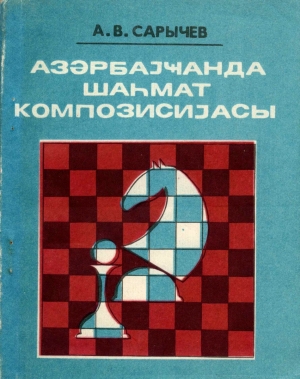 Chess composition in Azerbaijan / Азəрбаjҹанда шаhмат композисиjасы
Author:
Chess composition in Azerbaijan / Азəрбаjҹанда шаhмат композисиjасы
Author:
Sarichev 62.50 $ -
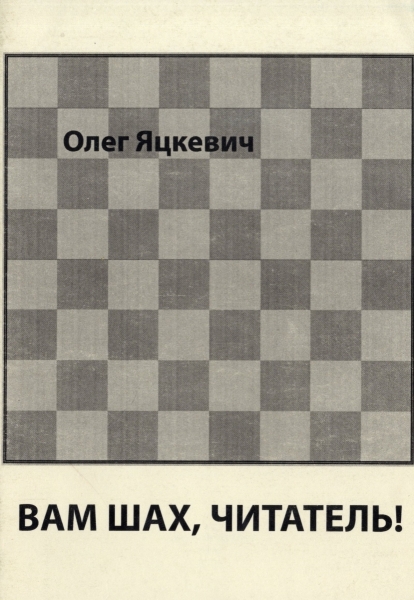 Check it out for you, reader
Author:
Check it out for you, reader
Author:
Yatskevich 15.00 $ -
 Notebook of the chess player of the Russian Chess Federation
4.25 $
Notebook of the chess player of the Russian Chess Federation
4.25 $
-
 Lessons of Mastery. Second edition, revised
Author:
Lessons of Mastery. Second edition, revised
Author:
Dvoretsky 18.75 $ -
 Alexandra Goryachkina: On the way to the chess Olympus
Author:
Alexandra Goryachkina: On the way to the chess Olympus
Author:
Kryakvin 18.75 $ -
 Complete Encyclopedia of Health by Dr. Zalmanov
Author:
Complete Encyclopedia of Health by Dr. Zalmanov
Author:
Zalmanov 16.00 $ -
 Invitation Fide candidates tournament 2020
92.50 $
Invitation Fide candidates tournament 2020
92.50 $
-
 64 chess review No. 1,2,3,4,5,6,7,8,9,10,11,12 for 2024 (Price per issue)
5.00 $
64 chess review No. 1,2,3,4,5,6,7,8,9,10,11,12 for 2024 (Price per issue)
5.00 $
-
 Antique pre-revolutionary wooden chess
0.00 $
Antique pre-revolutionary wooden chess
0.00 $
-
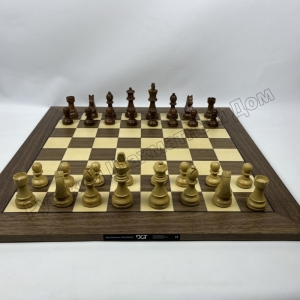 DGT Timeless Wooden weighted Chess Set Handcrafted with Non-Folding Board
600.00 $
DGT Timeless Wooden weighted Chess Set Handcrafted with Non-Folding Board
600.00 $
 Русский
Русский  Английский
Английский 

